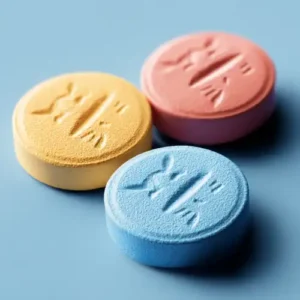Hair follicle drug testing has become an increasingly common method for determining if someone has used drugs in the past 90 days. Unlike urine and blood testing, some organisations and law enforcement agencies may require a hair follicle drug test. These tests help employers and decision makers when hiring, determining custody, or proving past drug use. However, myths around hair drug testing can lead to misconceptions about its validity and reliability.
Here we debunk the top 5 myths around hair follicle drug testing:
Myth One: Hair Testing Detects All Drugs
Many believe hair testing can find all types of drugs. However, a standard hair follicle test only looks for cannabis, amphetamines, opiates and cocaine. Some specialised labs may also check for prescription drugs like oxycodone. While hair tests detect many drugs, results can vary and be impacted by environmental factors leading to false positives.
You might be surprised to learn that even some hard drugs like ketamine or newer synthetic substances can slip through undetected. Think of hair testing like a fishing net – while it catches many common fish, some will inevitably swim right through the gaps.
Myth Two: Hair Testing Detects Very Old Drug Use
Another common myth is that hair testing uncovers drug use from long ago. But standard hair drug tests only go back around 90 days, with some minor individual variation. Labs usually only test the first 35-50 millimetres closest to the scalp, not the full strand. Testing a whole hair is only done in special cases and can be questionable. For jobs, only worry about the first 50-75 millimetres of growth.
If you’re worried about that one wild weekend from your college days five years ago, you can breathe easy. Just as trees show growth rings for each year, your hair only tells the story of your most recent few months.
Myth Three: Employers Can Always Require Hair Testing
Employment drug testing rules differ by country, and even by state. Some jurisdictions let employers test only in limited circumstances for current employees. Others don’t specify testing rules for new hires. But companies should follow consistent drug testing policies.
While your boss might think they’ve got carte blanche when it comes to drug testing, the law often says otherwise. Just as you can’t demand to search an employee’s home without cause, random hair testing isn’t always fair game.
Myth Four: Special Shampoos Can Beat Hair Tests
No shampoo can wash away evidence of drugs. You can remove external residues, but tests detect metabolites inside the hair that can’t be erased. There are no reliable shampoo-based solutions to beat a hair test.
Despite what that sketchy website trying to sell you a £50 miracle shampoo claims, you can’t wash away what’s locked inside your hair shaft. It’s like trying to remove the chocolate chips from a baked cookie – once they’re in there, they’re staying put.
Myth Five: Positive Hair Tests Can’t Be Refuted
Hair testing depends on strict protocols, so there are defences against false positives. For example, using hair from a brush won’t give reliable results. Depending on how the test was done, the suspect may have a case against invalid, false positive results.
Every testing method has its weak spots, and hair testing is no exception. Before you panic over unexpected results, remember that scientific evidence, just like eyewitness testimony, can be challenged when proper procedures weren’t followed.
Background on Hair Drug Testing
Hair drug testing has become more commonplace in recent decades as an alternative or supplement to more traditional testing methods like urine or blood screening. Some key advantages of using hair include:
- Longer detection window — Hair follicles can reveal drug use going back approximately 90 days, unlike urine which only shows very recent use.
- Harder to cheat — It’s difficult to alter or mask results with hair vs urine or blood, making it useful for court-ordered tests.
- Wide range of common substances — Hair can detect many types of commonly abused drugs, including cocaine, opiates, cannabis, amphetamines and PCP.
- Easier collection — No need for specialised facilities or bathroom use, just a hair sample.
Hair screening does have disadvantages as well. These include:
- Limited by growth cycles — No usage can be detected if hair is shorter than 38 millimetres. Head hair grows about 13 millimetres per month.
- Not all drugs detected — Hair analysis is limited compared to urine or blood testing. Hair mainly shows external contamination rather than actual use.
- Susceptible to environmental contamination — Exposure to certain chemicals, smoke or even food can cause false positives.
- Limited sample size — Only a small amount of hair can be tested, just 25-51 millimetres, so results may not tell the whole story.
While hair follicle drug screening has some clear benefits, it’s important to understand it does not provide a full proof, fool-proof method. But when applied properly and with knowledge of its limitations, hair testing can serve as a useful complement to other drug screening approaches.
How Hair Drug Testing Works
Hair drug testing is based on the fact that trace amounts of substances we ingest get deposited in hair follicles. As our hair grows at predictable rates, testing hair sections can provide a rough timeline of drug use. Here’s an overview of how the testing process works:
- A hair sample is collected, often from the head. Body hair may be used if insufficient head hair.
- The most recent 35-50 millimetres closest to the scalp are cut. This provides a 90 day window.
- The sample is washed to remove any external contamination.
- The hair is dissolved and screened using immunoassay techniques.
- If positive, a confirmatory GC/MS or LC/MS test is done.
- Results are reviewed by a medical review officer (MRO), who contacts the donor if positive.
- The MRO checks any prescriptions or explanations before finalising results.
Several factors can influence results and lead to inaccurate outcomes if proper procedures aren’t followed:
- Chemical treatments like dyes, bleach or permanents can degrade evidence in hair.
- Natural hair variations related to age, gender and ethnicity can impact results.
- Environmental elements like passive smoke or contaminated water sources introduce external metabolites.
Proper testing controls for these variables. But it illustrates the importance of scientifically sound collection, handling and analysis methods for accurate hair drug screening.
Hair Testing Applications
More workplaces now complement urine tests with hair analysis, which provides a longer detection window. This gives employers greater assurance that a candidate has been drug-free for the last 90 days. Hair testing is also harder to subvert and is less invasive than urine collection. However, hair screening for current employees is restricted in some locations.
Those on probation or parole may be subject to compulsory drug testing to prove sobriety and compliance with release conditions. Hair provides a wide date range, is difficult to tamper with, and is considered highly accurate. But proper protocols must be followed to avoid false positives.
Hair testing may be used in child custody disputes or investigations to determine if parents have been using drugs recently. However, there are concerns over the psychological impact on children. Testing procedures must also be demonstrated as valid.
In conjunction with self-reported history, hair analysis can provide doctors with an objective overview of a patient’s drug use. This allows better diagnosis of substance abuse disorders and improved treatment programs. Strict chain of custody is essential.
While hair follicle drug screening has important applications, we’ve seen there are also limitations and pitfalls. When applied judiciously and interpreted cautiously by trained professionals, hair testing can be a useful tool. But myth and hype around its capabilities can lead to misuse. Being mindful of what hair screening can and can’t tell us leads to more effective, ethical applications.
Hair Testing Limitations
While hair drug screening can provide useful information in certain contexts, it’s important to be aware of its limitations and potential for inaccuracies. Here are some key hair testing limitations to keep in mind:
Detection Timeframes
Head hair can reveal drug use only as far back as the length of the hair sample — around 90 days for standard 35-50 millimetre sections. Anything prior leaves no residue in the portions of hair grown before use. However, body hair grows slower, so can widen the window if tested.
This limited historical view makes hair testing alone insufficient for determining a full drug history. Urine and blood tests may detect more recent use outside the hair growth window.
Distinguishing Occasional vs Regular Use
Hair tests can identify the presence of drugs but not determine frequency of use. A one-time exposure creates a similar result to repeated use over weeks or months. So hair analysis provides no context on whether drug use is a single event or habitual pattern.
External Contamination
One major drawback is that hair mainly picks up traces of drugs from external exposure, not just ingestion. This makes results potentially unreliable. Exposure to cannabis smoke, cocaine powder or even tainted water can trigger false positives.
Proper cleansing and analytical methods aim to minimise contamination issues. But the risk remains, requiring results to be considered carefully before serious decisions are made.
Challenging Legal Defensibility
The limited ability of hair to distinguish illegal drug use from external contact poses challenges. This makes it easier to dispute hair test results in court or employment hearings compared to urine or blood screenings. Those facing positive results often dispute findings based on contamination factors.
While hair does offer advantages like ease of collection, extended window of detection, and resistance to evasion, analysts say results should not be viewed as definitive evidence. Hair screening provides supporting information, but experts recommend it be considered alongside other drug testing methods for important decisions like employment or child custody.
Conclusion
In summary, hair follicle drug testing can be a useful complement to traditional screening methods. However, understanding its limitations is crucial to avoid reliance on potentially misleading findings. Hair primarily shows external exposure rather than actual use, and provides no context on frequency of use. Environmental contamination also raises the prospect of false positives. Used judiciously alongside other testing approaches, hair analysis offers valued insight. But hype around its capabilities calls for analytical caution.
Photo by mostafa meraji on Unsplash
Zoom Testing is a leading UK drug testing company and a supplier of Drug Test Kits.





